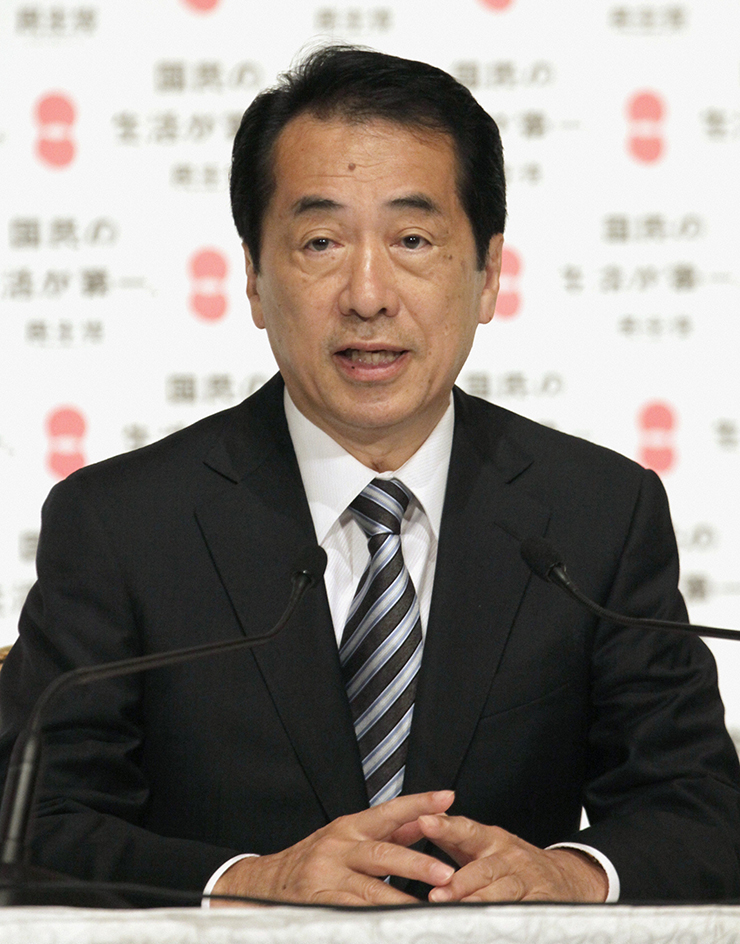Kan, Naoto, << kahn, nah oh toh >> (1946-…), served as prime minister of Japan from June 2010 to August 2011. Kan took office following the resignation of Prime Minister Yukio Hatoyama. Kan led the Democratic Party of Japan (DPJ). In March 2011, an earthquake and tsunami (series of powerful ocean waves) caused widespread destruction on Honshu, Japan’s largest island. Kan was heavily criticized for his response to the disaster and quickly lost popularity. He stepped down as prime minister in August.

Naoto Kan was born on Oct. 10, 1946, in the city of Ube in Yamaguchi Prefecture. He studied physics at the Tokyo Institute of Technology and graduated in 1970. He passed the exam to become a patent attorney in 1971 and opened his own patent attorney firm in 1974. He later became a prominent figure in civic reform groups in the Tokyo area. In the late 1970’s, he was involved in organizing the United Social Democratic Party, a small party that opposed the long-ruling Liberal Democratic Party (LDP).
In 1980, Kan won election to the lower house of the Diet, Japan’s legislature. In 1993, the United Social Democratic Party joined with other anti-LDP parties to form a ruling coalition. The coalition collapsed the following year. Kan joined the New Harbinger Party in 1994. This party formed a coalition government with the LDP and the Social Democratic Party of Japan in mid-1994.
During most of 1996, Kan served as Japan’s minister of health and welfare. He became well known to the general public when he revealed that the ministry had covered up a scandal involving tainted blood products. The contamination had led to the infections of thousands of people in Japan with HIV, the virus that causes AIDS, in the 1980’s.
In 1996, Kan cofounded a new party, called the Democratic Party of Japan, with Yukio Hatoyama. In 1998, the party merged with several other opposition parties to form a new DPJ. At that point, the DPJ became the primary opponent of the ruling LDP. Kan served as the new party’s president from 1998 to 1999, as its secretary-general from 2000 to 2002, and again as its president from 2002 to 2004.
In 2009, the DPJ defeated the LDP in parliamentary elections, and Hatoyama became prime minister. In this period, the DPJ was divided between those who supported controversial party leader Ichiro Ozawa and those who did not. Ozawa, a former member of the LDP, was known for his ability to raise money and for forging secret political deals. Kan, a long-time proponent of open government, became a key leader of the group that opposed Ozawa. In January 2010, Kan became finance minister. Hatoyama quickly lost popularity and soon faced pressure from the DPJ to step down. In June, Hatoyama resigned, and Kan succeeded him as prime minister. A short time later, Ozawa mounted an unsuccessful challenge for leadership of the DPJ and the office of prime minster.
Kan’s term of office was plagued by a number of difficulties. In July 2010, the DPJ lost its majority in the upper house of parliament. Analysts saw the loss as evidence of declining confidence in the party’s ability to govern. In March 2011, an earthquake off the coast of Honshu caused a tsunami that sparked a crisis at a nuclear power plant. Kan was slow to take a public leadership role in dealing with the disaster, further eroding confidence in his ability to lead. Kan stepped down in August, and the DPJ chose Yoshihiko Noda to succeed him.
See also Japan earthquake and tsunami of 2011.
